Released in October 2021, Google’s latest Pixel generation claims to be “completely reimagined, inside and out”. The Pixel 6, positioned between the high-end Pixel 6 Pro and the more affordable Pixel 5a With 5G, features an impressive number of features for its value, including a 6.4-inch, 90Hz OLED display, 8GB of memory, 128 or 256GB of storage, a new camera setup with a 50MP primary camera and 12MP ultra-wide camera, an IP68 rating, and Google’s brand new in-house-developed Tensor chipset.
In terms of audio, the Pixel 6 and the Pixel 6 Pro are identically equipped: two speakers for stereo playback, and three microphones for stereo recording, wind noise reduction, speech enhancement, and audio zoom. We put Google’s sixth Pixel iteration through our rigorous DXOMARK Audio test suite to measure its performance both at recording sound using its built-in microphones, and at playing audio back through its speakers. In this review, we will break down how it fared in a variety of tests and several common use cases.
Key audio specifications include:
-
Two speakers (one bottom right, bottom-firing, and one top, front-firing)
- Three microphones
- Audio Zoom
- USB Type-C input for headphones (no 3.5mm jack)
About DXOMARK Audio tests: For scoring and analysis in our smartphone audio reviews, DXOMARK engineers perform a variety of objective tests and undertake more than 20 hours of perceptual evaluation under controlled lab conditions. This article highlights the most important results of our testing. Note that we evaluate both Playback and Recording using only the device’s built-in hardware and default apps.
(For more details about our Playback protocol, click here; for more details about our Recording protocol, click here.)
Test summary
Scoring
Sub-scores and attributes included in the calculations of the global score.
Google Pixel 6


 40th
40th 3rd
3rdPlayback
Cons
- Somewhat thin and midrange-focused tonal balance, lacking low-end extension
- Stereo doesn’t follow the phone’s rotation when listening to music (only when watching movies)
- The first volume step is too low, whereas the maximum volume step is too harsh.
Recording
With an overall Audio score of 71, the Google Pixel 6 lands within the average of all the phones we’ve tested to date — three points above its predecessor, the Pixel 5, four points behind Apple’s latest standard model, the iPhone 13, and alongside devices such as the Xiaomi Mi 11 Ultra, and the Google Pixel 6 Pro! Yet, the Pixel 6 offers a slightly different performance than the Pro version.
In playback, the Google Pixel 6 turns in a consistently average performance in all areas except for the artifacts category, in which the phone demonstrates a true skill at keeping undesirable signals to a minimum. Timbre is fairly thin and midrange-focused, globally less pleasant than with the Pixel 6 Pro, whereas dynamics are surprisingly good and consistent at all listening volumes. Apart from the slightly disappointing wideness, spatial attributes (localizability of the various elements within the mix, left-right balance, and distance rendering) are all above average. All in all, the phone’s playback results make it a decent choice for gaming, but only a slightly above-average option for music and movies.
In the recording area, the Pixel 6 ensures a highly dynamic sound capture with a harmonious tonal balance even at high SPL, and once again, exhibits a real know-how in controlling sonic artifacts. But despite a realistic distance capture, spatial results are a bit subpar due to poorer results in selfie videos, and limited wideness overall. The Google Pixel 6 is deft at recording nearly every scenario, and particularly gifted for recording in loud environments.
Sub-scores explained
The DXOMARK Audio overall score of 71 for the Google Pixel 6 is derived from its Playback and Recording scores and their respective sub-scores. In this section, we’ll take a closer look at these audio quality sub-scores and explain what they mean for the user.
Playback

Timbre
Google Pixel 6
65
89
Timbre tests measure how well a phone reproduces sound across the audible tonal range and takes into account bass, midrange, treble, tonal balance, and volume dependency.
The Google Pixel 6 turns in an average timbre reproduction. Precision and clarity are on target for music playback, but in-game audio and vocal contents are impaired by excessive sibilants and plosives. Treble can occasionally sound harsh, and high-end often becomes aggressive. Also, due to a lack of low mids, midrange lacks body. That said, it remains clear and well-defined.
The speakers lack both high- and low-end extension, which induces a fairly thin and midrange-focused sonority overall. Their tonal balance remains consistent at loud playback levels, but becomes thinner and even more deprived of bass as volume head to softer levels.

Dynamics
Google Pixel 6
65
81
DXOMARK’s dynamics tests measure how well a device reproduces the energy level of a sound source, and how precisely it reproduces bass frequencies.
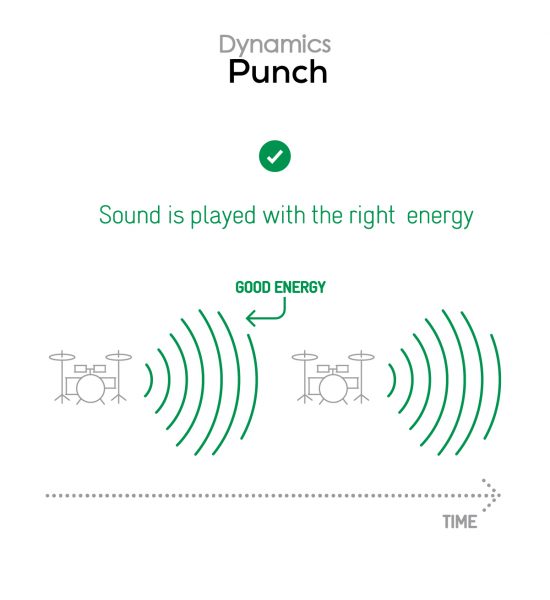
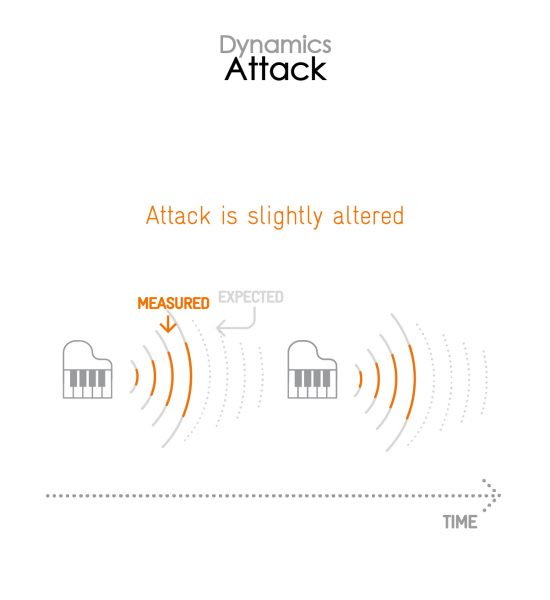
Dynamics are also average. Attack remains relatively consistent across all volumes, often lacking sharpness, except for “lighter” music genres (acoustic, less compressed, fewer instruments). Due to the limited low-end extension, bass precision often lacks definition, although it exhibits a rather consistent precision at both soft and maximum volumes. Finally, audio played back by the Pixel 6 is quite punchy regardless of the listening level, except when watching movies at soft volumes.

Spatial
Google Pixel 6
68
88
The sub-attributes for perceptual spatial tests include p, balance, distance, and wideness.
Keeping in line with its previous results, the Google Pixel 6 also produces average results in the spatial category. The different elements are easy to localize within the mix, distance rendering is correct, and balance is well centered across all use cases — unlike the Pixel 6 Pro!

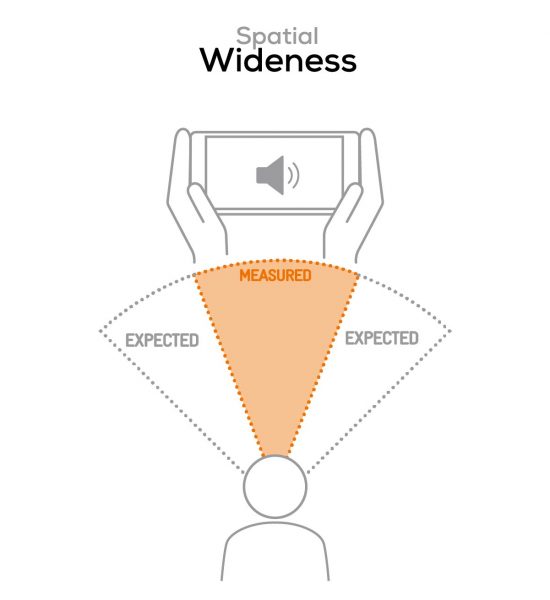
On the other hand, wideness is somewhat disappointing, the sound stage being slightly narrower than the device’s physical limitations. Additionally, audio only follows the phone’s rotation when watching a movie, but not when playing music.

Volume
Google Pixel 6
66
91
Volume tests measure both the overall loudness a device is able to reproduce and how smoothly volume increases and decreases based on user input.
As shown in the graph above, volume steps are very consistent from softest to loudest levels. If the first is a bit too quiet to leave all types of audio contents fully intelligible (classical music and movies in particular), the last (i.e. maximum volume) offers a very satisfying loudness level. Here are a few sound pressure levels (SPL) measured when playing our sample recordings of hip-hop and classical music at maximum volume:
| Hip-Hop | Classical | |
| Google Pixel 6 | 74.8 dBA | 69.7 dBA |
| Google Pixel 5 | 75.2 dBA | 72.4 dBA |
| Xiaomi 11T Pro | 73.4 dBA | 70.1 dBA |

Artifacts
Google Pixel 6
94
113
Artifacts tests measure how much source audio is distorted when played back through a device’s speakers. Distortion can occur both because of sound processing in the device and because of the quality of the speakers.
Not only does the Google Pixel 6 outperform the Pro version in the management of playback artifacts, but its score is only two points lower than this category’s top-scorer, the Samsung Galaxy A52 5G.


Besides slight pumping at maximum volume and occasional static noise, no sonic artifacts are perceivable at nominal nor at maximum volumes. On another note, the speakers aren’t easy to occlude even when holding the phone with both hands — a very practical perk for playing games!
Recording

Timbre
Google Pixel 6
80
91
The Google Pixel 6 scores very well in the recording timbre category, thanks to consistent and smooth midrange, clear treble, and good bass, despite a slight lack of high- and low-end extension.
Voices sound natural, and the tonal balance manages to remain harmonious when recording in loud environments.

Dynamics
Google Pixel 6
71
81
Dynamics picked up by the Pixel 6’s microphones are accurate. The signal-to-noise ratio is particularly good in selfie videos, whereas the sound envelope is especially precise when it comes to recording concerts or memos. In loud environments, plosives and transients are notably sharp.
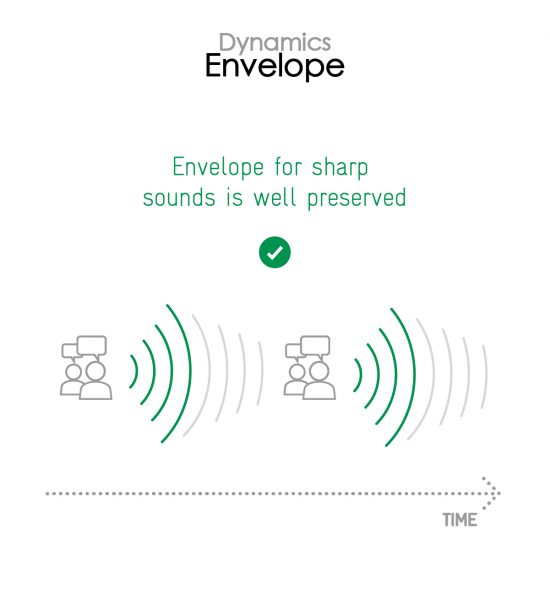
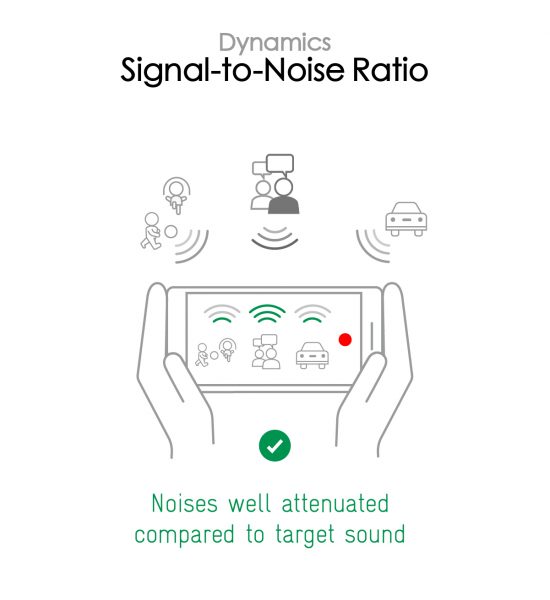

Spatial
Google Pixel 6
51
78
In the recording sphere, spatial performance is the Pixel 6’s Achilles’ heel: localizability is well below average (particularly low in selfie videos and meeting recordings), and wideness is limited — but to be fair, that’s a reproach we could make for almost every device. Distance is realistically captured thanks to the midrange consistency, and unlike other elements, voices are easily localizable.

Volume
Google Pixel 6
64
99
The Google Pixel 6 reaches a very good loudness at nominal level — actually, it is the loudest of all the Pixel devices we’ve tested to date. Here are our test results, measured in LUFS (Loudness Unit Full Scale); as a reference, we expect loudness levels to be above -24 LUFS for recorded content:
| Meeting | Life Video | Selfie Video | Memo | |
| Google Pixel 6 | -27.8 LUFS | -17.9 LUFS | -16.3 LUFS | -19.8 LUFS |
| Google Pixel 5 | -28.8 LUFS | -20 LUFS | -19 LUFS | -22.8 LUFS |
| Xiaomi 11T Pro | -28.1 LUFS | -26.3 LUFS | -23.9 LUFS | -22.4 LUFS |

Artifacts
Google Pixel 6
79
97
While it isn’t as impressive as in playback, the phone’s artifacts management in recorded audio still remains highly satisfying. Very few sonic artifacts are noticeable overall, except for slight clipping on shouting voices, and perceivable compression when recording strong bass hits in loud environments. You can check for artifacts yourself in this sample recording:
Also, just like the Pro, the Pixel 6’s microphones are highly sensitive to wind.
Despite a slight lack of bass and a rather nasally tonal balance, backgrounds in life videos sound clean. In selfie videos, backgrounds are also clean, and natural.
Conclusion
The Google Pixel 6 surpasses its predecessors and achieves the same overall score as the Pro version, though offering a slightly different performance. It fares decently in playback with average scores for music and movies, along with interesting strengths for gaming — including good dynamic and spatial attributes, discreet artifacts, and speakers that do not get easily occluded by the user’s hands. In the recording area, spatial results are the weaker links in the Pixel 6’s otherwise impressive streak, which makes it adapted to almost any situation, especially when it comes to recording in loud environments, or filming videos. The Pixel 6 offers an incredible audio performance, particularly for its price segment.



DXOMARK encourages its readers to share comments on the articles. To read or post comments, Disqus cookies are required. Change your Cookies Preferences and read more about our Comment Policy.